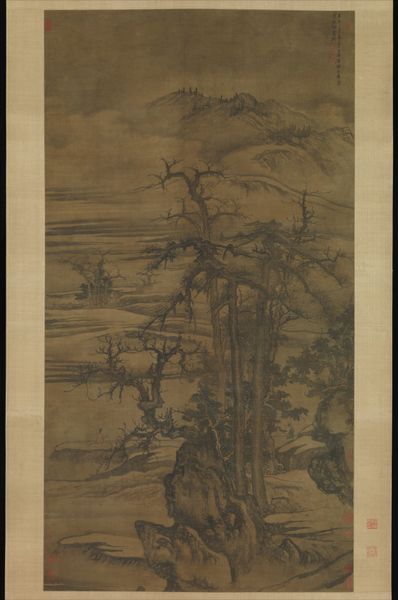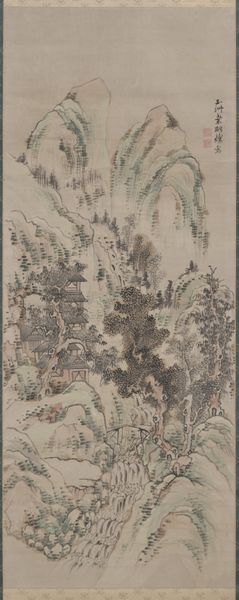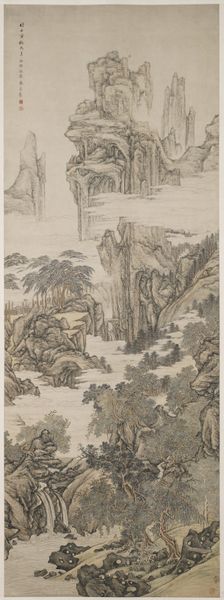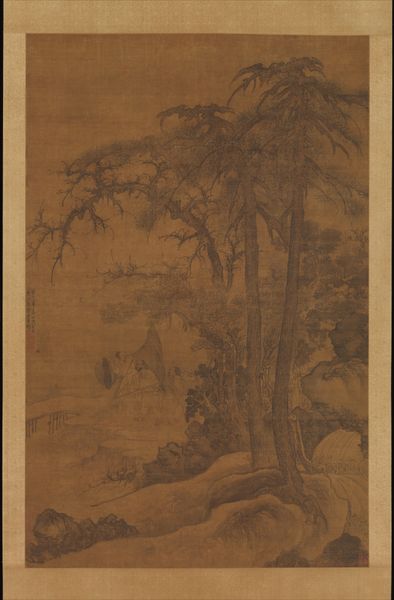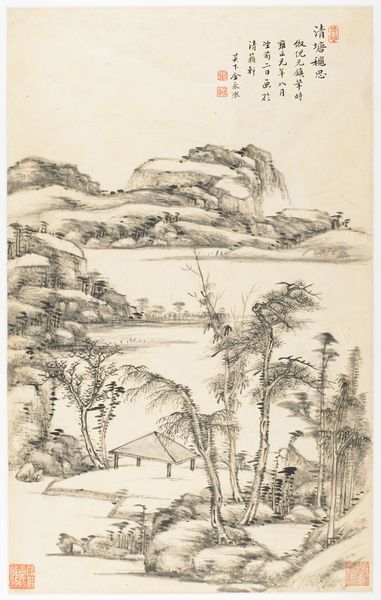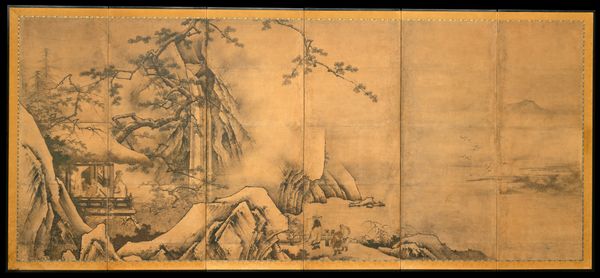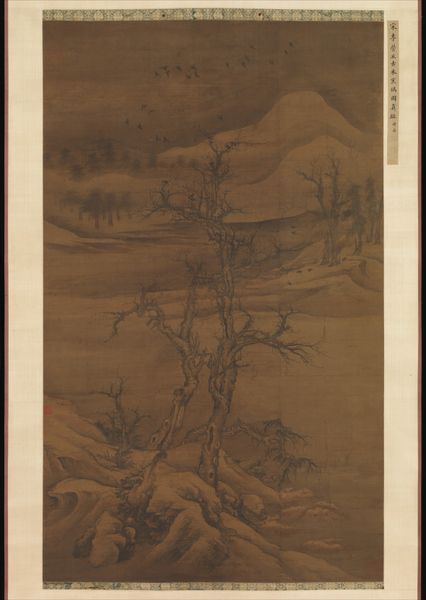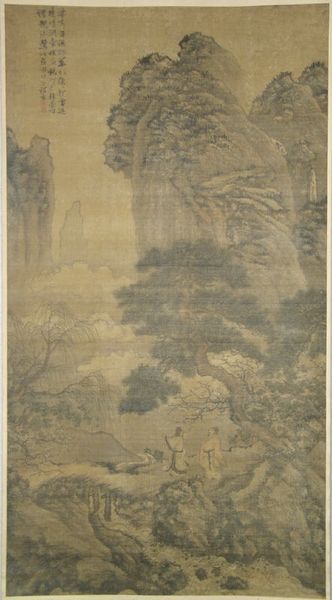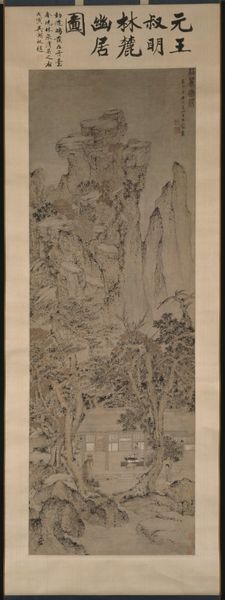
drawing, hanging-scroll, ink
#
drawing
#
ink painting
#
asian-art
#
landscape
#
hanging-scroll
#
ink
Dimensions: 67 3/8 x 18 7/16 in. (171.13 x 46.83 cm) (image)111 5/16 x 26 13/16 in. (282.73 x 68.1 cm) (without roller)
Copyright: Public Domain
Cheng Ming rendered this landscape using ink on paper, a tradition deeply embedded in Chinese art history. The texture of the paper itself plays a crucial role. Its absorbent quality allows the ink to bleed and diffuse, creating subtle gradations of tone and depth. Consider how the artist uses controlled brushstrokes to define the rocks and trees, contrasting them with the hazy, atmospheric washes that suggest distance. This required masterful technique, honed through years of dedicated practice. The act of painting in this style is as much about disciplined execution as it is about spontaneous expression. We can imagine Cheng Ming carefully grinding his ink, preparing his brushes, and entering a meditative state before applying the first stroke. This intimate connection between the artist, the material, and the subject is central to the work's meaning. It challenges our conventional ideas about artistic creation. It reminds us that art is not just about the final image, but also about the process, the skill, and the cultural values embedded within it.
Comments
minneapolisinstituteofart almost 2 years ago
⋮
Cheng Ming was born in Shexian in Anhui province and lived and worked near Yangzhou. He was a noted poet and a student of the individualist artist Shitao, one of the greatest individualist literati painters of the seventeenth century. Individualist painters did not follow traditional norms of landscape painters, but created their own distinct style using different brushworks. The painting depicts a literati recluse visiting a scholarly friend in his wintry mountain retreat. The spiky calligraphic brushwork of the rocks is counterbalanced by Cheng's own poem, which reads: Willow catkins, reed embroidery, wind through the entire night.But still, there is the plank bridge for crossing the flowery stream.That man lives here, in evening blue-green, in midst of chilly fragrance.As spring comes to a thousand cliffs and myriad ravines.Cheng Ming, Songmen composed this (in addition to the painting) as well.
Join the conversation
Join millions of artists and users on Artera today and experience the ultimate creative platform.
